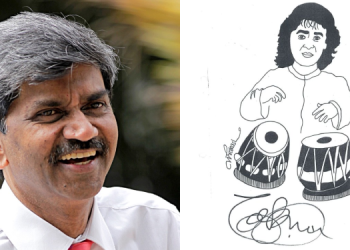Social media influencers have recently made headlines for peculiar reasons. Elvish Yadav, the winner of ‘Bigg Boss’ OTT and a popular influencer, was briefly arrested following accusations of involvement in the illegal sale of snake venom for use as a psychotropic substance at a rave party. Market regulator SEBI barred influencer ‘Baap of Chart‘ Mohammad Nasiruddin Ansari for misleadingly providing stock recommendations as educational training and ordered him to refund Rs.17.2 crore to followers. A video by influencer Revant Himatsinghka (going by the moniker ‘foodpharmer’) criticising the high sugar content of Mondelez India’s Bournvita resulted in the company sending a legal notice to silence him.
While they faced severe backlash, such incidents underscore the substantial impact and sway that influencers, despite not being ‘traditional’ celebrities, have on consumer choices due to their relatability and specialised knowledge.
Influencers span various fields, including fashion, beauty, finance, travel, fitness, technology and more, offering expertise, recommendations and trends. Users benefit from personalised content, product reviews and the latest trends, enhancing their social media experience. Meanwhile, marketers and brands leverage influencers to effectively target specific demographics, enhance engagement and establish trust. Influencers create high-quality content, reducing the marketing workload and allowing brands to measure campaign impact, leading to more successful strategies.
In the world of influencer marketing, followers are often seen as a valuable commodity, and influencers generate income through sponsored content and partnerships. While this monetisation is a common practice and a legitimate source of income for influencers, followers must be aware of potential bias in paid endorsements. For instance, Gaurav Taneja (Flying Beast) surprised many, when he boasted about his earnings in a recent interview – “Bhai, jis company ne fire kiya tha na, AirAsia ne, uske CEO se zyada kama raha hun main.”
It’s important to remember that in the make-believe world of social media, influencers primarily present the best version of themselves, and their advice should be approached with caution. Influencers often focus on entertainment rather than expertise. While they excel in lighter subjects like fashion and travel, their advice may not be suitable for critical matters such as health, finance or legal issues. For these, it’s crucial to prioritise professional guidance over influencer recommendations.
Influencers may also occasionally be tempted to misuse their demi-god-like status, derived from their extensive reach and trend-setting abilities. They might peddle risky advice, ranging from health and diet misinformation to unproven medical treatments, mental health guidance, safety hazards, financial tips, and even legal advice. Sometimes, even achieving that perfect ‘Insta-worthy’ shot on a travel influencer’s timeline may not be as easy and safe as it may seem.
The Australian Competition and Consumer Commission (ACCC) initiated a crackdown on social media influencers, focusing on deceptive marketing practices earlier this year. The ACCC found shortcomings in the existing Australian Consumer Law and recommended increased regulation and transparency, coinciding with a rise in consumer vulnerability. The crackdown led to higher penalties and new laws, emphasising consumer protection. Similarly, the Cyberspace Administration of China (CAC) has tightened controls on independent content creators by promulgating 13 guidelines while largely suggesting self-regulation. Clamour for similar control mechanisms is growing in other countries as the ‘influence of influencers‘ expands, and they produce deceptive content that flirts with the boundaries of the law.
The ‘Guidelines for Prevention of Misleading Advertisements and Endorsements for Misleading Advertisements 2022‘ from the Central Consumer Protection Authority (CCPA) and ‘The Guidelines for Influencer Advertising in Digital Media’ from the Advertising Standards Council of India (ASCI), while important, only partially address the issue of influencer marketing regulation in India. They are steps in the right direction but do not provide a comprehensive framework for the industry and marketers are best advised to self-regulate.
In the current landscape, influencer marketing plays a crucial role in a brand manager’s campaign strategy. However, it requires a delicate balancing act. This involves selecting the right influencer whose values align with the brand, setting clear expectations, and monitoring performance. One of the most critical aspects is implementing a strict content approval process to prevent influencers from making exaggerated claims about the product, potentially crossing legal boundaries. It’s also vital to encourage influencers to preserve their authenticity and offer creative freedom while adhering to brand guidelines, as authentic content tends to resonate better with audiences.

Influencer marketing has significantly evolved, with a diverse pool of influencers, from mini-celebrities with millions of followers to micro-influencers, targeting niche audiences. Building long-term relationships and diversifying influencer pools can extend brand reach and loyalty. And when this diversity is also evident in businesses that deploy influencer marketing – from local restaurants and bakeries inviting influencers to NSE, which collaborated with Aiyo Shraddha for the ‘Money Minded Malini’ series, educating investors on avoiding stock market mishaps – you know that influencer marketing has come of age and is playing a pivotal role in the modern landscape.
(The author is a senior professional in the corporate sector and writes on varied topics that catch his fancy. The views expressed here are his own. He posts on X @sandeepbangia)

















